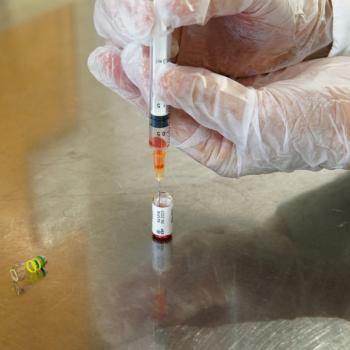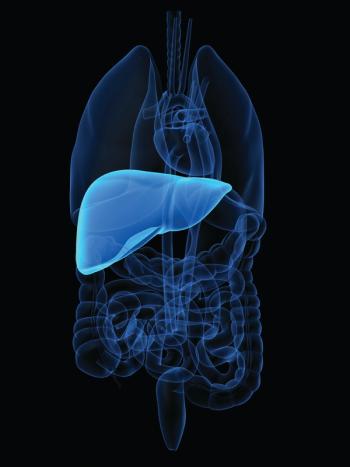
Axillary Ultrasound/Biopsy Effective Identifying Nodal Disease in TNBC at Diagnosis
Axillary ultrasound and biopsy appear to be an effective strategy to identify nodal disease in patients with early-stage triple-negative breast cancer.
A strategy using axillary ultrasound and biopsy at diagnosis to identify nodal disease, as well as routine use in patients with TNBC tumors over 1 cm and no palpable adenopathy, appears to be effective in those with newly diagnosed disease, according to Elizabeth A. Mittendorf, MD, PhD, in a presentation during the
Mittendorf, a physician, director of the Breast Immuno-Oncology Program, co-director of surgical research, and co-director of the Breast Cancer Clinical Research Program at Dana-Farber Cancer Institute, emphasized the importance of identifying candidates for treatment with preoperative pembrolizumab (Keytruda) and chemotherapy given the therapy’s event-free survival (EFS) benefit in patients with node-positive triple-negative breast cancer (TNBC).
In a cohort of patients from Dana-Farber Brigham Cancer Center (n = 343), 14.6% of patients were pathologically node positive. Among patients who were cT1a/b, 9.4% were node positive. Moreover, 14.9% of patients who were cT1c and 20.8% of patients who were cT2 were also node positive. In another cohort of patients pulled from the National Cancer Database (n = 46,015), 13.7% of patients were pathologically node positive. Among patients who were cT1a/b, cT1c, and cT2, 4.9%, 11.4%, and 19.7% of patients were node positive, respectively.
“Given [that] the EFS benefits of pembrolizumab have been truly game-changing for our [patients with] TNBC, every effort should be made to identify patients who are candidates to receive preoperative pembrolizumab plus chemotherapy,” she stated. “In our study, the clinical positivity rate…in T2N0 combined with the EFS benefit shown in trial give further support to administering pembrolizumab to all of the [patients with] clinical T2N0 TNBC.”
“These oncologic benefits come at the cost of some treatment-related adverse effects [AEs],” Mittendorf said. “What I’ve highlighted here are the immune-related AEs [irAE] because about 10% to 15% of them can be permanent. In KEYNOTE-522, the most common irAEs were related to the thyroid gland. Perhaps of interest to us as surgeons was the 2.7% rate of adrenal insufficiency.”
Although it is agreed that patients who are cT1N1-2 or T2-T4N0-2 should undergo treatment, it was unclear whether patients who are cT1cN0 should receive pembrolizumab, as they weren’t eligible for the KEYNOTE-522 trial. However, previous findings have determined that patients with TNBC derived an EFS benefit from pembrolizumab regardless of nodal status.4
As such, investigators set out to identify the rate of node positivity in patients with cT1-2N0 TNBC undergoing upfront surgery and assess the use of axillary ultrasound to detect disease in patients who are cT1-2 who received a negative clinical axillary exam.
To examine the rate of nodal positivity in this population, investigators assessed 2 cohorts of patients including the Dana-Farber cohort, which received treatment from 2016 to 2021, and the National Cancer Database cohort that was treated from 2010 to 2017. Pathologic nodal status was assessed using clinical T category and tumor size. The Dana-Farber cohort was also used to assess axillary ultrasound to identify nodal disease in patients who were cT1-2.
In the unselect cohort of 499 patients with cT1-2 tumors that was included in the axillary ultrasound analysis, ultrasound was performed in 34.1% of patients. Ultrasound was performed in 22.2% of patients who were T1a (n = 18) and no abnormal nodes or FNA/core biopsy–positive nodes were identified. Among patients who were T1b (n = 83), 12.0% received ultrasound, with 1 patient presenting with abnormal nodes that were FNA/core biopsy-positive. A total of 27.4% of patients who were categorized as T1c (n = 193) received ultrasound, of whom 28.3% had abnormal nodes; of these, 26.7% were FNA core biopsy-positive. In particular, 7.5% of patients in the cT1c category were node positive. Lastly, 50.2% of patients in the T2 cohort (n = 205) received ultrasound, with 37.9% having abnormal nodes and 30.0% positive via biopsy.
Investigators also assessed axillary ultrasound in a select population of patients whose tumors were cT1-2 and who were scheduled to undergo neoadjuvant chemotherapy (n = 48). In the cohort of patients who were T1c (n = 19), 15.8% had abnormal nodes on ultrasound and 33.3% were positive with FNA/core biopsy. In this group, 5.3% of patients were found to be node positive. In the T2 group (n = 29), 34.5% of patients had abnormal nodes with ultrasound and 50.0% were positive via FNA/core biopsy.
References
- Mittendorf EA, Weiss A, Kantor O, et al. Nodal positivity in early stage TNBC: Implications for preoperative immunotherapy. 2022 Society of Surgical Oncology Annual Meeting; March 11-12, 2022; Dallas, TX. Abstract 13.
- FDA approves KEYTRUDA (pembrolizumab) for treatment of patients with high-risk early-stage triple-negative breast cancer in combination with chemotherapy as neoadjuvant treatment, then continued as single agent as adjuvant treatment after surgery. News release. Merck. July 27, 2021. Accessed March 11, 2022. https://bit.ly/2Vc0rgX
- Schmid P, Cortes J, Dent R, et al. VP7-2021: KEYNOTE-522: Phase III study of neoadjuvant pembrolizumab + chemotherapy vs. placebo + chemotherapy, followed by adjuvant pembrolizumab vs. placebo for early-stage TNBC. Ann Oncol. 2021;32(9):P1198-1200. doi:10.1016/j.annonc.2021.06.014
- Schmid P, Cortes J, Jusztai L, et al. KEYNOTE-522 Investigators. Pembrolizumab for early triple-negative breast cancer. N Engl J Med. 2020;382:810-821. doi:10.1056/NEJMoa1910549
Newsletter
Stay up to date on recent advances in the multidisciplinary approach to cancer.


















































































